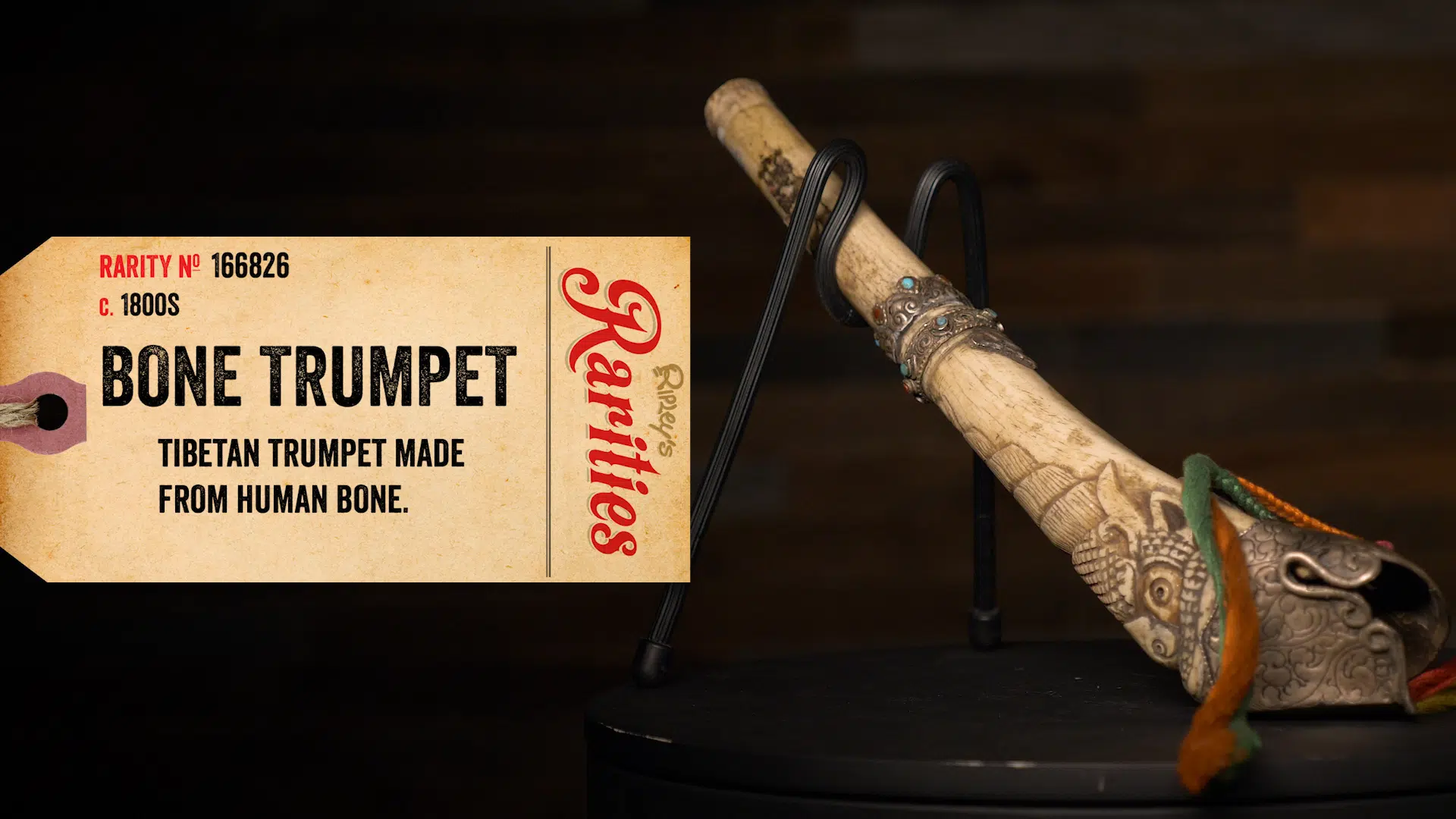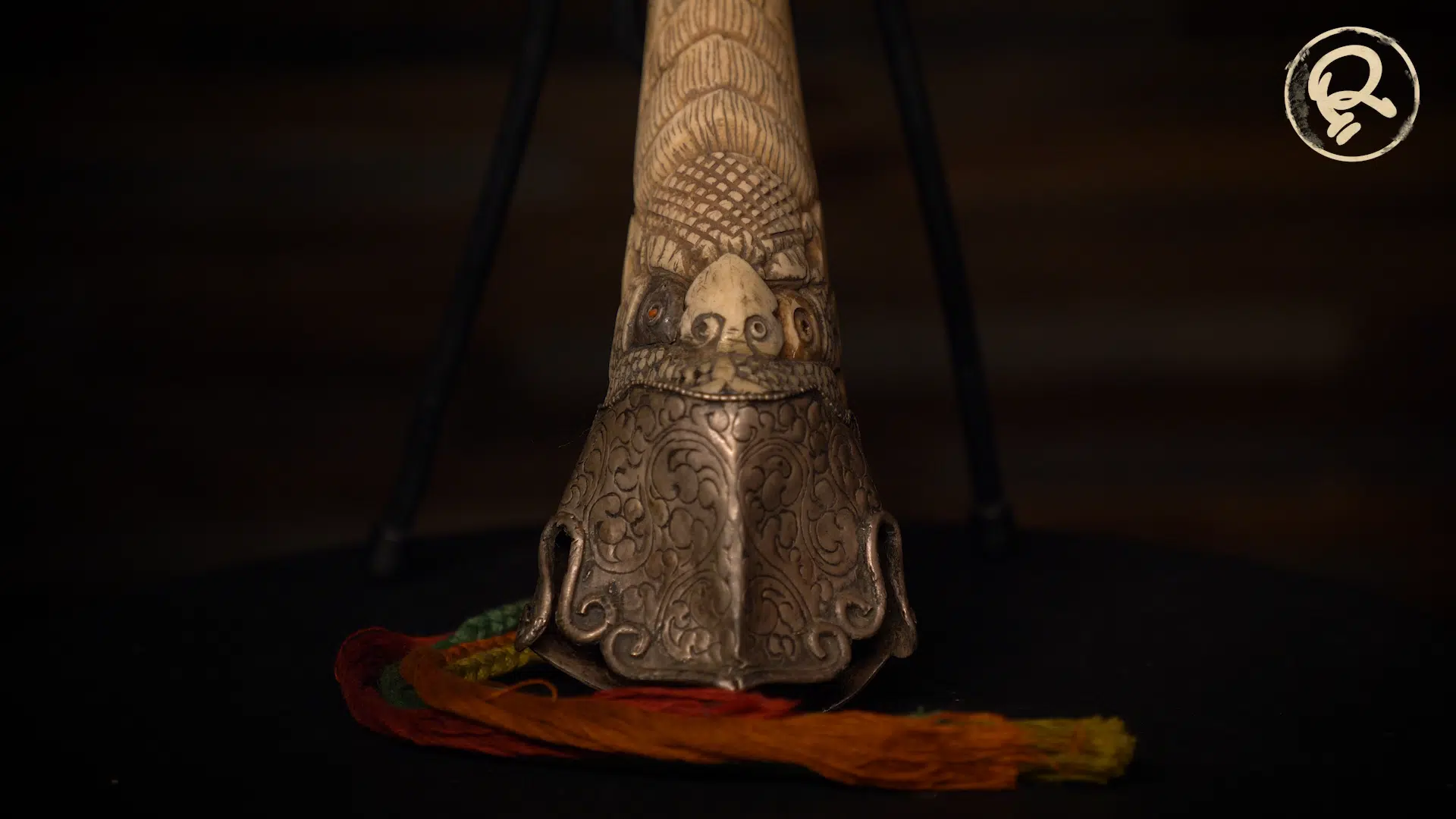
A Bone Trumpet Made For Calling Demons
Featured in Ripley's Believe It or Not!

Bone Trumpet
One of the oldest and most famous instruments in Tibet is the bone trumpet, also known as a kangling.

Featured in Ripley's Believe It or Not!

One of the oldest and most famous instruments in Tibet is the bone trumpet, also known as a kangling.
Made from a human thigh bone, at some point a Buddhist monk cut off one end to make a mouthpiece, then bore holes in the other end for air to pass through. Then came the careful process of clearing the marrow channel and completing the airway.
These trumpets can simply be bone or ornately adorned. Delicate carvings of mythological dragons, ornately shaped silver, leather wrappings, and turquoise were used to decorate the trumpets, as well as preserve them. As bone dries, it becomes fragile. Metal and leather decorations were oftentimes utilitarian as well as decorative.
The trumpet was often paired with a drum made from the tops of human skulls known as damaru. These drums would be played in the right hand while the trumpet was played in the left—the hand of wisdom.

The beautiful songs played on these grisly instruments symbolized the duality of life and death, helping the practitioner to better understand the emotional attachment they had to their own body. The trumpets sound was often seen as a method of calling hungry or even evil spirits to a ceremony, with kangling players seen as demonstrating their fearlessness.
Believe it or not, the bone trumpet itself predates the arrival of Buddhism in Tibet. These trumpets were part of a complex ritual system involving sky burials before monks arrived in Tibet. Instead of supplanting Tibetans old beliefs, Buddhism incorporated many of the Tibetans practices instead, creating an amalgamation of ancient Tibetan rituals with Buddhist principles and beliefs. By the time western powers began exploring the area, Tibet had become notorious for using human remains in the religious ceremonies, especially in the eyes of European explorers.
Source: A Bone Trumpet Made For Calling Demons


